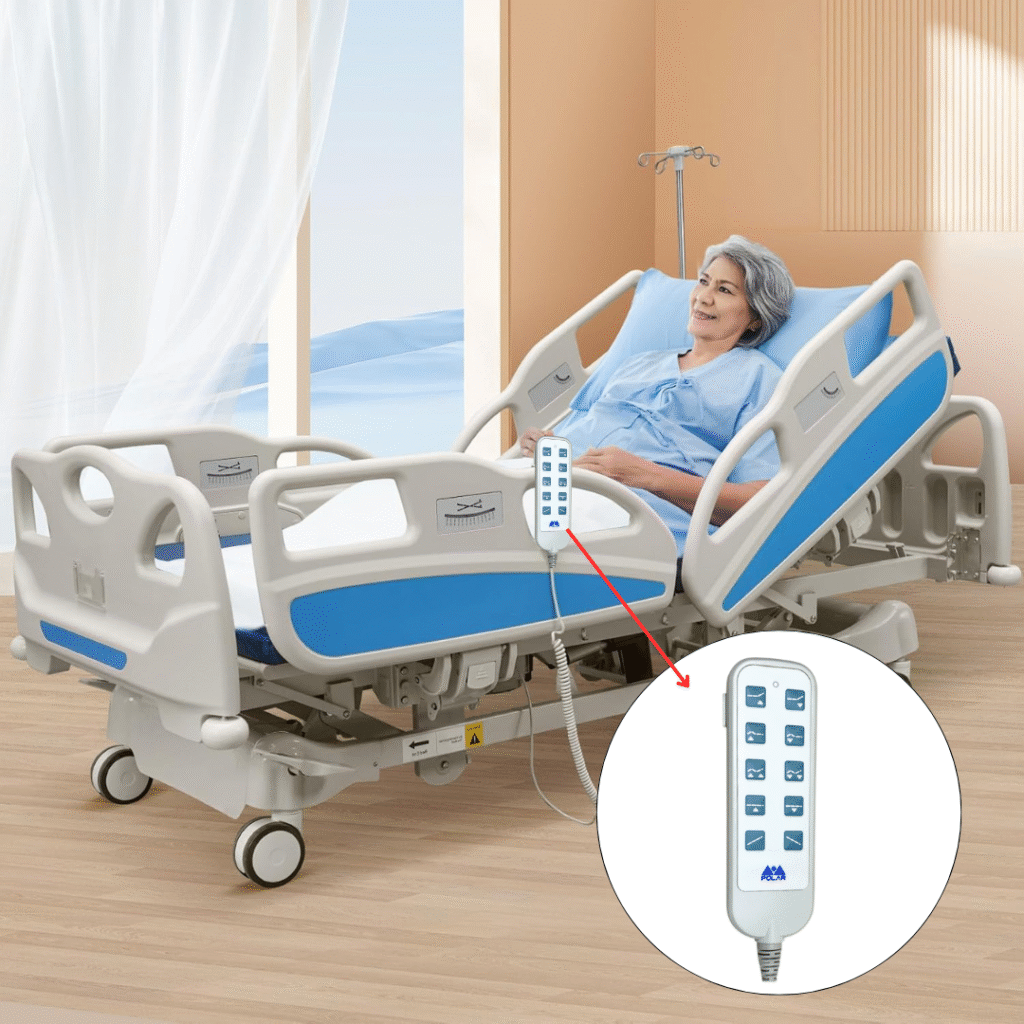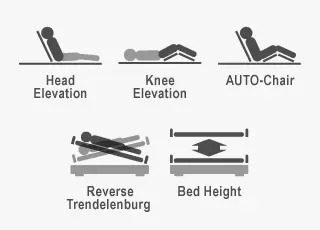
In the healthcare sector, patient comfort and caregiver efficiency are paramount. One of the silent heroes in this process is the hospital bed remote. From simple 1-function remotes to sophisticated 5-function models, these devices have dramatically transformed patient care in India. By combining intuitive design with advanced technology, modern hospital bed remotes not only enhance patient safety but also empower caregivers to provide efficient, precise care.
Evolution of Hospital Bed Remotes
Hospital beds have come a long way from manual adjustments to fully automated systems. Initially, 1-function hospital bed remotes offered only basic control, such as adjusting the headrest or raising the bed. While simple, these remotes were a significant step forward in reducing patient strain and caregiver workload.
As patient care requirements grew more complex, the industry shifted towards multi-function remotes. Today, 5-function hospital bed remotes are becoming the standard, especially in ICU settings. These remotes allow simultaneous adjustments of multiple bed sections, including the backrest, leg rest, height, Trendelenburg, and reverse Trendelenburg positions.
Key Advantages of Upgrading to 5-Function Remotes
- Enhanced Patient Comfort
With multiple functions at their fingertips, patients can easily adjust their position to alleviate discomfort, prevent bedsores, and improve breathing. In critical care situations, such as ICU stays, precise positioning can significantly impact recovery outcomes. - Improved Caregiver Efficiency
Remote control beds for patients simplify daily care routines. Caregivers no longer need to manually adjust the bed, saving time and reducing the risk of injury. Tasks like transferring patients or adjusting the bed for medical procedures become seamless. - Integration with Electric Linear Actuators
Modern 5-function remotes are often paired with electric linear actuators. These actuators ensure smooth, silent, and precise movements, making adjustments safer and more reliable. Electric linear actuators also reduce mechanical wear and tear, increasing the longevity of hospital beds. - Customizable Controls
Linear actuator hospital beds handsets now offer programmable settings, allowing hospitals to pre-set common positions for patient comfort, surgical procedures, or physiotherapy sessions. This feature is particularly beneficial for ICUs and critical care units where every second counts.
Why Indian Hospitals Are Embracing Multi-Function Remotes
The Indian healthcare sector has witnessed rapid modernization over the past decade. With an increasing focus on patient-centric care and hospital efficiency, hospitals are investing in advanced solutions like 5-function remotes.
ICU Bed 5 Function Manual models are now widely adopted in high-dependency units. These beds allow caregivers to make precise adjustments manually if needed, while still offering the benefits of electronic control. This hybrid approach ensures reliability even in power outages, a crucial consideration in many Indian hospitals.
Furthermore, the adoption of electric linear actuators in hospital beds has made these devices more affordable and energy-efficient. With smoother operations and minimal maintenance, hospitals can provide better care without incurring excessive costs.

Features to Look for in Modern Hospital Bed Remotes
- Ergonomic Design – Easy-to-grip handsets reduce strain for patients with limited mobility.
- Durability – Long-lasting components ensure consistent performance in demanding hospital environments.
- Safety Mechanisms – Automatic stop functions prevent accidental injuries during bed adjustments.
- Compatibility – Should seamlessly integrate with existing hospital bed models and linear actuator systems.
- User-Friendly Interface – Simple buttons with clear labeling make operation intuitive for both patients and caregivers.
Case Study: Transforming ICU Patient Care
Consider an ICU in Mumbai, India, where beds equipped with 5-function remotes and electric linear actuators were introduced. Caregivers reported a significant reduction in time spent repositioning patients manually. Patients expressed increased comfort and satisfaction, noting how easy it was to adjust the bed to their preferred position. This real-world example underscores how even small innovations like multi-function remotes can enhance hospital efficiency and patient outcomes.
The Future of Hospital Bed Remotes in India
As technology evolves, hospital bed remotes will continue to integrate smarter features. Remote control beds for patients may soon include connectivity with hospital management software, allowing medical staff to monitor bed positions remotely. Advanced sensors may detect patient movements and adjust the bed automatically to prevent falls or pressure ulcers.
Moreover, as awareness of patient-centric care grows, even smaller clinics and private hospitals in India are likely to adopt 5-function remotes, ensuring patients receive the same level of care traditionally available only in large, urban hospitals.
Choosing the Right Hospital Bed Remote
When selecting a hospital bed remote, hospitals must consider:
- Patient needs – ICU, post-surgery, or long-term care patients may require different functionalities.
- Caregiver convenience – Handsets should reduce workload and prevent ergonomic strain.
- Actuator compatibility – Ensure the remote aligns with electric linear actuators for smooth operation.
- Budget considerations – Investing in durable, multi-function remotes may have higher upfront costs but reduces maintenance expenses over time.
By carefully evaluating these factors, hospitals can enhance both patient experience and operational efficiency.
Conclusion
From simple 1-function controls to advanced 5-function hospital bed remotes, technology is reshaping patient care in India. Electric linear actuators and ergonomic handsets make adjustments effortless, safe, and precise. Hospitals that embrace these innovations improve patient comfort, streamline caregiver operations, and elevate the overall quality of care.
As the Indian healthcare sector continues to modernize, the adoption of multi-function hospital bed remotes will become the norm, making patient care smarter, safer, and more efficient.
Investing in advanced hospital bed remotes is no longer just a technological upgrade—it’s a commitment to patient-centered care. With innovations like linear actuator hospital beds handsets and remote control beds for patients, hospitals can deliver excellence in every aspect of patient care.


Add a Comment